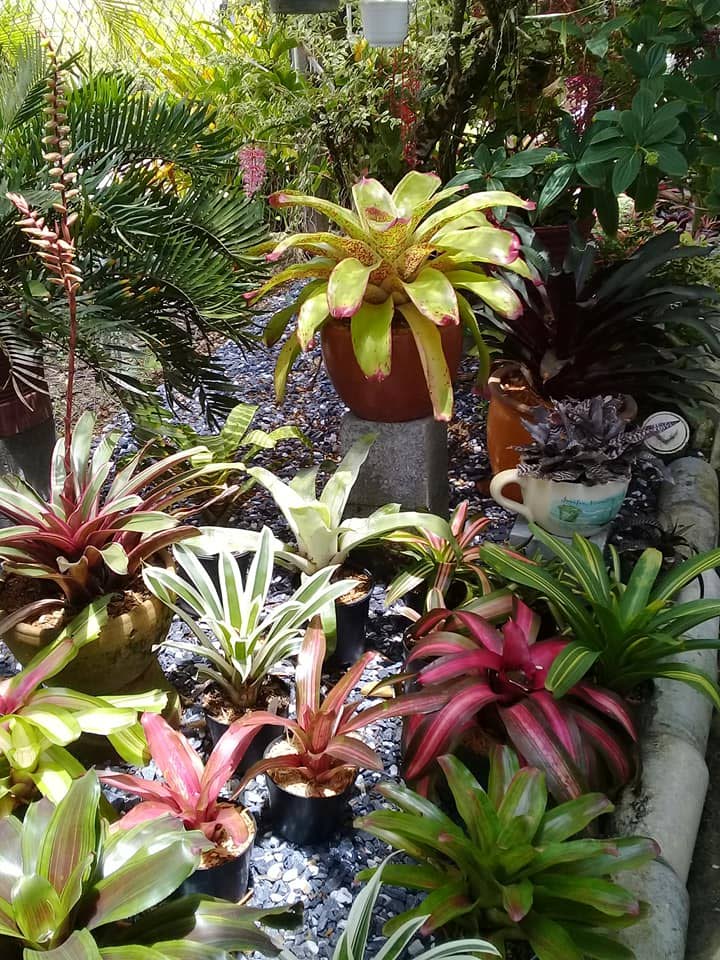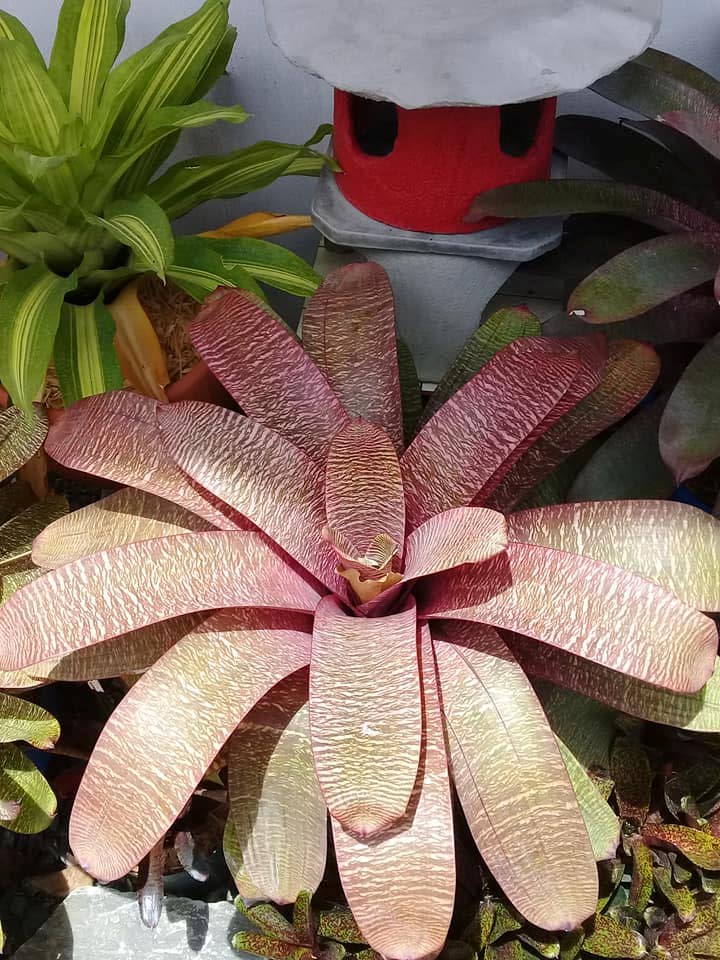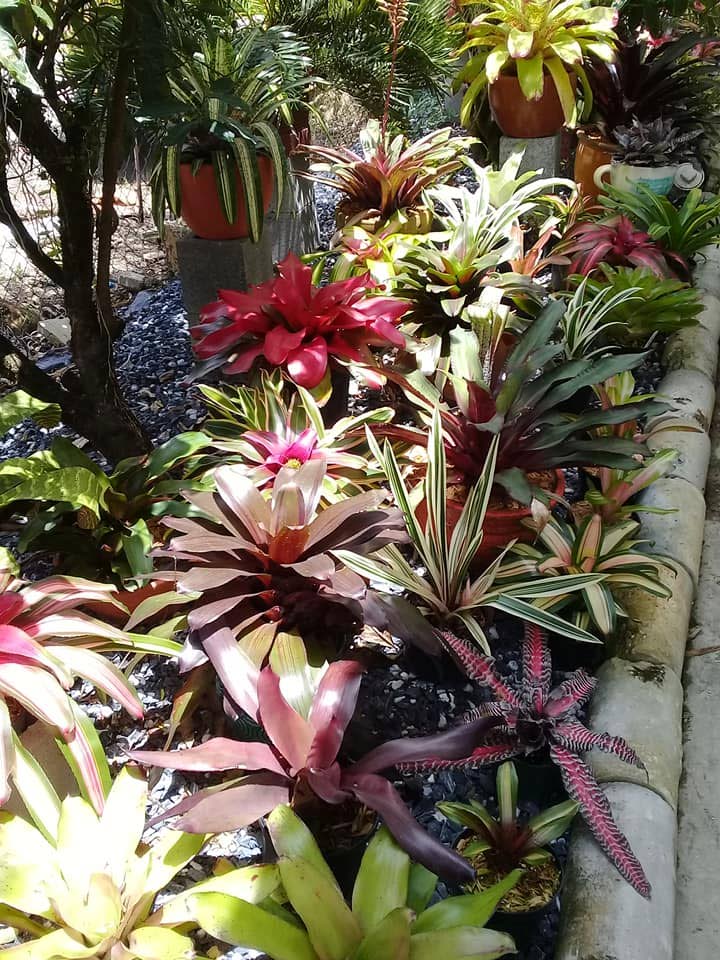For the love of bromeliads

ALLISON ATTZ
Bromeliads are fascinating ornamental plants that have been growing increasingly popular over the past seven years in TT. Gardeners have been removing green foliage plants and replacing them with these tropical exotics in their landscape. The foliage of bromeliads is known for being vibrant and eye-catching with colours of yellow, red, green, orange, purple and brown. They grow easily in hot and dry climates as well as cool and moist conditions. Bromeliads are easy to grow and care for and produce beautiful blooms when mature.
Bromeliads can be found growing in three different ways; those that grow on rocks or on other plants, usually trees, have roots that act primarily as anchors rather than for taking up water and nutrients, as most other plants. The third type of bromeliad is terrestrial and grows with their roots in the ground. All bromeliads have special scales on the leaves that take in water and nutrients.

Bromeliads face few pest problems and can tolerate a significant amount of neglect. The terrestrial bromeliads that are planted in potting medium will take up water and nutrients through their roots, but they should not be kept very wet. In order to avoid root rot make sure you are using a well-draining potting mix. Do not mix garden soil in with the potting medium because it could easily introduce fungus. Prevention is key to managing rot in bromeliads. Take these precautions and you should not have any problems:
* Plant your bromeliads in potting medium with equal parts wood chips, cocopeat or promix and perlite for drainage.
* Water only when the potting medium is dry
Water may collect in the cup at the base of the leaves which may become a home for mosquito larvae. Most mosquitoes lay eggs in dark dirty water, ensuring that there are enough nutrients for the larva to feed on. Keeping the water in your bromeliads fresh and free of any organic matter on a regular basis will keep them unattractive to mosquitoes. If possible, dumping out the water and lightly misting the leaves to keep them hydrated will eliminate any water in the cups and remove any standing water entirely. Otherwise using a hose to flush the cups of any eggs, larvae and organic matter every few days is enough to keep populations down or eliminate them.

Many bromeliads will survive in a broad range of light conditions from low light to full sun. Even though they will continue to grow they will not look their best unless they are given the light that they are adapted to in their natural environments. Bromeliads can have incredible variegation and colour and these characteristics will diminish if given too much or too little light. If bromeliads are given too much direct sunlight light, they will become bleached and any colouring will become light green. If there is not enough light the bromeliads will become a dark green colour and any variegation will become less pronounced. The foliage will also become thin and leggy when it is not getting enough light. Brown dry spots on the leaves or tips of the leaves indicate that the bromeliads are scorched by too much direct light from the sun. When your bromeliads experience any of these problems choose a new location for your plant. When choosing the perfect spot for your bromeliads or when designing your landscape that includes bromeliads keep these factors in mind:

* Most bromeliads thrive in bright, indirect sunlight
* Many bromeliads will scorch when exposed for long periods of time to direct sunlight
For further information contact the Eastern Horticultural Club at 357-5033, or 720-2698 or easternhorticultural@hotmail.com The club meets on the first Saturday of every month (except public holidays) at 3 pm at Morton Hall, Aramalaya Presbyterian Church, Cochrane Street, Tunapuna.


Comments
"For the love of bromeliads"